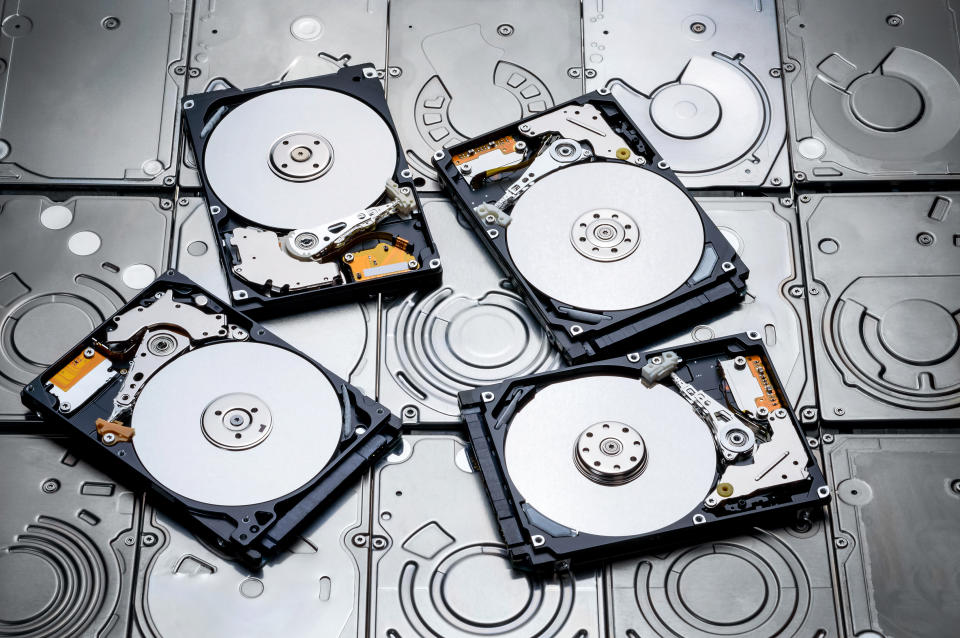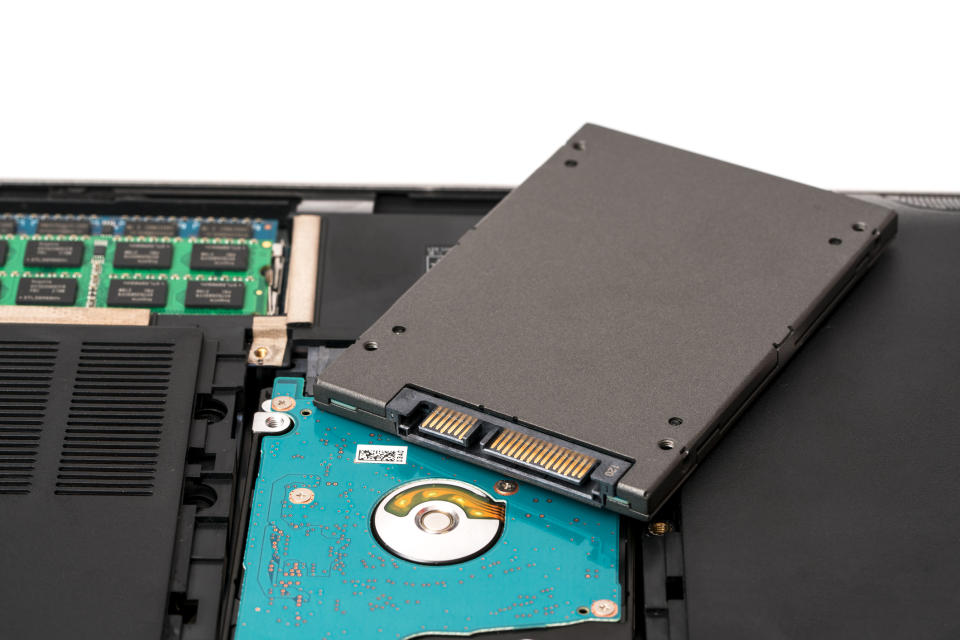Western Digital Still Faces Tough Headwinds
Western Digital's (NASDAQ: WDC) stock was cut in half last year as cyclical headwinds in the data storage and memory chip markets throttled its growth. However, the stock has rebounded about 40% this year on hopes of a recovery, and it still trades at less than 10 times forward earnings and pays a forward yield of 4%.
Investors might look at those numbers and believe that WD is an undervalued dividend stock. However, its recent third-quarter report indicates that it still faces tough challenges through the end of the year.

Image source: Getty Images.
What happened to Western Digital?
Western Digital is the largest maker of traditional platter-based HDDs (hard disk drives) in the world. This business faces tough competition from flash-based SSDs (solid-state drives), which are smaller, faster, more power-efficient, and less prone to damage than HDDs.
To keep pace with this technological shift, WD acquired SanDisk, one of the world's largest makers of flash memory (NAND) chips and SSDs, in 2016. During the third quarter 56% of its revenue came from HDDs, while the remaining 44% came from flash-based products.
However, WD's HDD and flash businesses are both struggling with cyclical headwinds. HDD sales are waning due to softer enterprise demand, lower PC sales (caused by Intel's (NASDAQ: INTC) ongoing chip shortage), and competition from SSDs. Meanwhile, the flash business is struggling with a global decline in NAND prices.
More pain on the horizon
During the third quarter, WD's HDD revenue fell 22% annually as its flash revenue tumbled 32%. The non-GAAP gross margins at both businesses contracted both sequentially and annually:
Non-GAAP gross margin | Q3 2018 | Q2 2019 | Q3 2019 |
|---|---|---|---|
HDD | 33% | 27% | 29% |
Flash | 55% | 35% | 21% |
Total | 43.4% | 31.3% | 25.3% |
Source: WD quarterly reports.
By end market, WD's client devices (for PCs, mobile devices, and embedded storage products) revenue fell 30% annually, its client solutions (USB drives, external drives, and flash products) revenue fell 23%, and its data center revenue tumbled 25%.
Therefore it wasn't surprising that WD's revenue, EPS, and free cash flow (FCF) all declined sharply during the third quarter.
YOY growth | Q3 2018 | Q4 2018 | Q1 2019 | Q2 2019 | Q3 2019 |
|---|---|---|---|---|---|
Revenue | 8% | 6% | (3%) | (21%) | (27%) |
Non-GAAP EPS | 52% | 23% | (15%) | (63%) | (95%) |
Free cash flow | (17%) | (16%) | (46%) | (96%) | N/A |
YOY = Year-over-year. Source: WD quarterly reports.
Furthermore, WD reported a negative FCF of $110 million for the quarter, compared to a positive FCF of $24 million in the second quarter and $616 million in the prior year quarter.
This raises red flags for its dividend. WD spent $146 million on dividends during the quarter, which means that it funded that payout with its cash reserves instead of its FCF. WD finished the quarter with $3.8 billion in cash, cash equivalents, and marketable securities. That's a 25% drop from a year earlier. WD also finished the quarter with $10.8 billion in debt.
Banking on a turnaround
Those figures seem to indicate that WD is heading off a cliff. But the bulls believe that the HDD and SSD markets are approaching a cyclical bottom, which could mark an inflection point for its business going forward.

Image source: Getty Images.
WD's average selling price per drive during the quarter of $73 marked a $6 improvement from the second quarter and just a $1 drop from a year earlier. Intel expects to resolve its chip shortage issues by the second half of the year, which should get PC sales back on track, while most analysts expect NAND prices to rebound by the end of the year.
For the fourth quarter, WD expects its revenue to decline about 27% annually (at the midpoint) with a non-GAAP gross margin of 24%-25%, and for its non-GAAP EPS to decline roughly 94%. That guidance indicates that WD's declines are finally bottoming out, and that its growth could accelerate again once market conditions improve. That should allay the longer-term concerns about its FCF, dividend, and debt levels.
The bottom line
Earlier this year I warned investors that WD was a shaky investment because it's risky to buy a cyclical stock before it bottoms out. However, WD's third-quarter numbers and fourth-quarter forecast indicate that it's finally hitting rock bottom.
I don't think WD's turnaround is guaranteed yet. However, I think the potential rewards outweigh the risks at these levels, especially with a low P/E ratio and high dividend setting a floor under the stock.
More From The Motley Fool
Leo Sun has no position in any of the stocks mentioned. The Motley Fool is short shares of Western Digital. The Motley Fool has a disclosure policy.

 Yahoo Finance
Yahoo Finance 